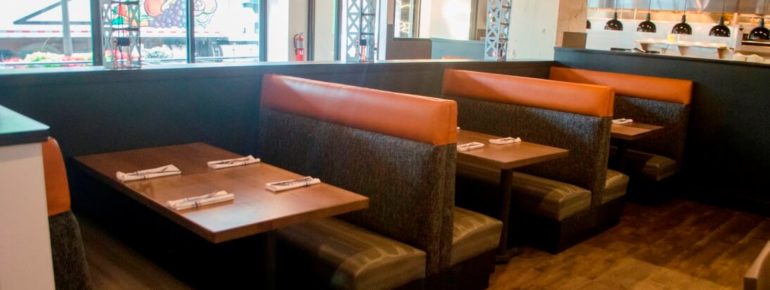Risk Management
All You Need to Know About Risk Management in the Restaurant Business

Restaurants create magical experiences. However, that magic isn’t something made-up. Restaurants function because of complicated, multi-level systems all working cohesively to construct an end result. And so, managing a restaurant is a tricky business. However, managing the risks of a restaurant can be even trickier. Property protection, employee safety, and public liability all support a functioning restaurant. Nonetheless, when those areas of need are poorly managed, risks can pile up and overrun a workplace. Risk management programs help assess, prioritize, and minimize risk, so that a restaurant, or any organization, can follow paths to success.
Property & Casualty
With busy kitchens and a constant flow of people in and out of the property, restaurants experience hectic, risky, day-to-day schedules. Despite that risk, any restaurant’s end goal is to create a safe and enjoyable environment where employees can earn an honest living and customers can appreciate a good meal. In turn, creating a safe property is extremely significant for any successful restaurant.
Property and casualty insurance help restaurants align these goals with their coverage in order to look beyond policy placement to make sure that restaurants are not only covered, but that the program designs achieve alignment with their specific goals, whether those be culinary in nature, or more organizational. Through operational risk assessments, reviewing insurance policies, and identifying areas of exposure, our property and casualty insurance programs help lower risks like fire prevention and water damage, while simultaneously increasing premise security and employee/patron safety. In turn, restaurants can focus on what matters: food!
Risk Assessments
“If you can’t measure it, you can’t fix it.” Different forms of that expression serve various uses in every area of business operation. However, with risk management, measurement is vital. In order to mitigate risk, you first need to understand how much risk you are facing. And what kind? Where is that risk concentrated? How long has it existed, and how soon can you minimize it? With restaurants, public safety is of the utmost concern. And, for restaurants of any size, it can often be difficult to evaluate how much risk is appropriate and how much risk is too dangerous.
No one will ever be able to eradicate risk. Owning a restaurant is owning a risky business. However, the rewards far outweigh the risks; and that is why the restaurant business flourishes. With that being said, understanding risk, allows restaurant owners to create paths to success that prioritize healthy environments and proactively plan for the bumps that may arise along those paths.
Often, collaborating with another party to receive a second perspective allows restaurants and organizations to unearth areas of need and heightened risk that they may otherwise have been blind to or ignored. Whether it is premise security or workplace harassment, investing in risk assessments can target areas of risk, so that restaurants can keep up with the fast paced schedules that lead to their success.
Alternative Risk Financing
Restaurants are no normal business. Again, they are magical. (Can you tell we are foodies?) Valet may be parking cars while chefs sear salmon and waiters buzz around with several drinks in the air. Restaurants are special. Alternative risk financing offers restaurants the opportunity to work with risk management teams to determine which specialized options can achieve long-term organizational health goals, such as, cost savings, increased control over claims handling, and broadened coverage. These plans help restaurants, which sometimes require more than just the standard guaranteed cost marketplace. Risk purchasing groups and large deductible plans are just two of many different ways in which alternative risk financing can help protect employee safety.
With many different moving parts, restaurants are the prime exemplar of how complex businesses need to create proactive plans to deal with risk management. The food industry is ripe with violations of property protection, employee safety, and public liability. Nonetheless, with property and casualty insurance plans, risk assessments, and alternative risk financing, restaurants can discover the perfect combination of risk management programs to create an improved environment for success.





